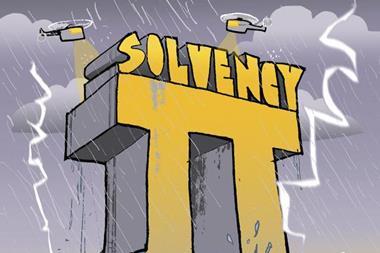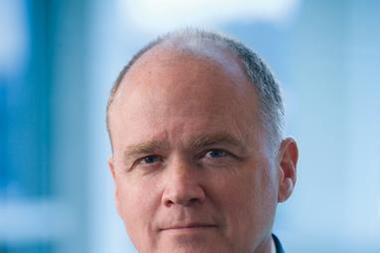The Solvency II deadline is looming, with firms now using risk management as an even more vital business tool

The internal modelling has been done - or should have been. The Own Risk and Solvency Assessments are grinding towards their conclusion. And firms are still trying to persuade the European Insurance and Occupational Pensions Authority (Eiopa) to soften its attitude towards captives and other specific insurance groups, albeit without success.
The Solvency II clock is ticking rapidly towards its official implementation in 2014 and moving into a risk-management phase. As regulators are reminding firms, there’s a lot more to be gained from Solvency II than merely tweaking internal models and boosting capital to the satisfaction of supervisory authorities. In short, risk management is moving to the top of the agenda as a vital business tool.
And that’s official. Eiopa chairman Gabriel Bernadino told a conference recently that risk management had not been seen as “a relevant element of an insurance regulatory regime” until
Solvency II appeared.
“Now more than ever, insurers need to rely on strong risk management capabilities to deal with the different challenges posed by the economic slowdown, the financial market volatility, the stress on sovereign debt, the demographic changes and the evolving pattern of natural catastrophes,” Bernadino says.
Risk managers will note that three out of the five mentioned - economic slump, see-saw markets and record yields on sovereign debt - are products of the post-Lehman Brothers financial climate.
‘Many firms take too narrow a focus in risk management, seeing it as a way of exercising control over exposure, limits and other numbers’
Thomas Wilson, Allianz
And the implications for boards are profound, more so than many may realise. According to KPMG director of insurance risk and former FSA supervisor Rob Curtis, too many directors just don’t realise the risks they face. “A typical response to these issues, especially by non-execs, is: ‘But I’m not the manager and can’t be expected to know all this’,” he says.
Clearly, this response will not cut it when Solvency II goes live. “Solvency II will require board members to have a reasonable level of understanding of the key parameters and assumptions in risk management. Supervisors will make explicit requirements of board members, particularly in critical aspects of challenging and reviewing management processes,” he says. “Expectations of directors will be a lot more onerous than they used to be.”
If that’s not risk, nothing is. However, the good news is that some directors are humble enough to recognise their pre-Solvency II skills won’t pass muster in this more interrogative new world. Many are seeking extra technical training from consultants in a wide range of technicalities such as risk margins, own funds, capital requirements, liquidity and many others.
As the responses to Eiopa’s latest survey show, now that they’ve got through much of the box-ticking stage, firms are becoming anxious about precisely what supervisors want.
“The industry would like to see less detail on documentation requirements and more precise rules on the expectations of the supervisors,” says Munich Re risk manager Dr Kathleen Ehrlich.
But apart from highly competent directors, what exactly are supervisors looking for? In Bernadino’s words, they want risk management systems “covering at least areas like underwriting and reserving, asset-liability management, investment, liquidity and concentrations,
operational risk and reinsurance and other risk-mitigation techniques.”
Role reversal
The best solution, suggests KPMG’s Curtis, may be for boards and management to put themselves in the regulators’ position as a way of not bringing their wrath on the firm. Pre-Solvency II, regulators tended to assume that firms knew best and largely left them to it. In future though, supervisors in the FSA (and it’s replacement, the FCA) will take a much more forward-looking view and expect directors to not only understand the risks inherent in the business plan - for example, in a merger or takeover - but to have the knowledge to challenge management on where the firm is heading.
“This is a big game-changer and nobody is quite certain how it will play out,” Curtis says. “But the board is expected to be able to scrutinise management’s proposals in a highly informed way.”
Solvency II can also be seen as a golden opportunity to develop better risk-management capabilities and more profitable business rather than be seen as merely a new set of standards, says Allianz chief risk officer Thomas Wilson. He points out that insurers have long observed strict risk management techniques in ways that distinguish them significantly from investment banking.
“Insurance underwriting organisations have a different mentality,” Wilson says. “We originate and hold risk positions on our own book in order to create value. Underwriters don’t have the luxury of thinking they can short out of a product. It’s a different culture.”
Because a highly risk-aware culture is already embedded in many firms, he believes they should adopt a more growth-focused view of Solvency II to get the most out of the standards: “Many firms take too narrow a focus in risk management, seeing it as a way of exercising control over exposure, limits and other numbers.” He would prefer to see managers use Solvency II to take up business issues and champion them.
Part of the DNA
Wilson’s firm conviction is that the risk-management culture is most effective when embedded in the firm, almost as part of its DNA, rather than relying on the implementation of yet another standard. After all, he points out, the Basel rulings on capital weightings also reflect Solvency II’s directives.
“Solvency II is a good reinforcement [in risk management practices] for laggardly firms, but often leads to too much focus on models and formalism,” Wilson says. “Getting the organisation at every level to understand and buy into the issue of doing good business, day in and day out, is the ultimate goal.”
He adds that he would back a business-savvy executive over a model any day and, making his point in the most emphatic way, he cites the senior executive at the Congressional enquiry into the collapse of Bear Stearns in March 2008 who described how the firm had file upon file of risk-mitigating systems and principles. As history shows, none worked.
Although risk management may be old hat for the giants of the industry, Solvency II is helping instill post-financial crisis standards across the industry.
Convergence
“For us at Swiss Re, it’s an evolutionary process,” says the firm’s Solvency II head of implementation Réjean Besner. “We tried to see from Solvency II if there was anything we could improve on, but we were already doing most of the right things.”
Besner believes the new standards are helping to lift the risk management game, however. “We like to see convergence of standards in the market,” he says. “It helps us if counter-party companies have good risk management practices in place. And Solvency II is more aligned with our view of risk than Solvency I was.”
Early warning
At Munich Re, risk management is not consigned to gather dust on shelves as it was at Bear Stearns. Rather, it’s measured pretty much continually against Solvency II and other yardsticks. The hub of Munich Re’s system is a flexible central risk management function to which staff can report a concern at any time. The function compares the risk model against regulatory and - critically for the insurance industry - against rating-agency measures at various levels throughout the firm. Of course, controls are in place and staff continually work under numbers that reflect the defined risk appetite.
Transparency with authorities is a bedrock of Munich Re’s system, with regulator BaFin receiving a quarterly internal risk report from the firm. “Early-warning mechanisms ensure that negative trends are identified in sufficient time for countermeasures to be taken,” Munich Re’s Dr Ehrlich says.
Fundamentally though, risk management under Solvency II comes down to the most old-fashioned of virtues. “Risk management is not just about quantitative methods,” says Dr Ehrlich, echoing Allianz’s Tom Wilson’s observations. “It has as much to do with experience and plain old common sense.”




















No comments yet